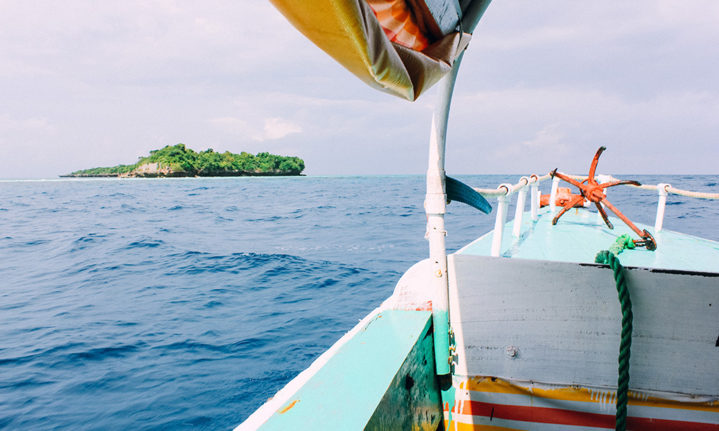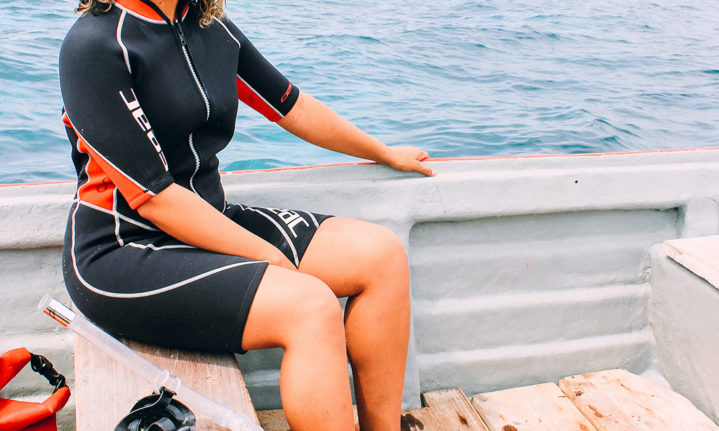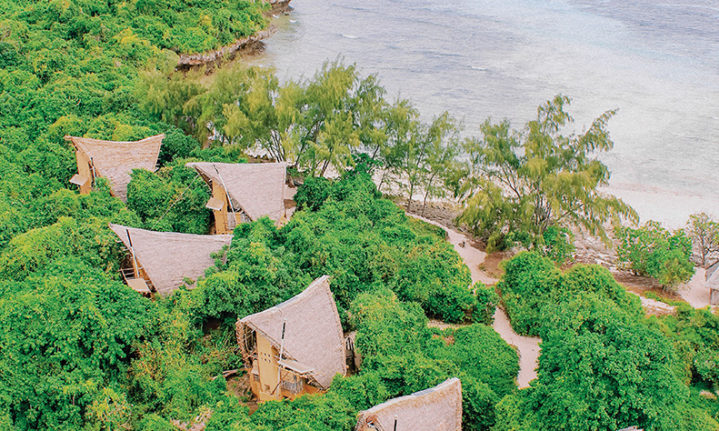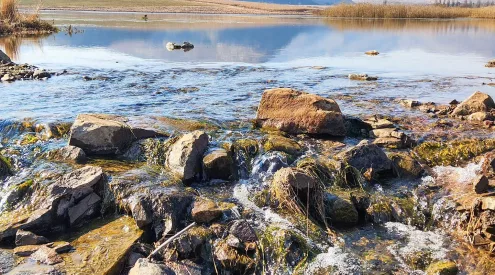As one of only two guests on uninhabited Chumbe Island, off Zanzibar’s west coast, with nothing but a mosquito net separating me from the tropical outdoors, this was as close as I’ve been to voluntary island desertion. As night fell, it dawned on me that this state-of-the-art eco-bungalow, with close-to-zero impact on the environment, also meant zero separation from the island’s creatures and elements.

It’s a 45-minute boat trip to Chumbe Island from Zanzibar. Image credit: Lauren McShane
Suddenly the urban dweller in me was acutely aware of the lack of windows, doors or even a tent zip in the rustic, romantic dwelling. I reminded myself there are no venomous snakes in this forest reserve, and that the biggest ‘wild’ creature is in fact a tiny duiker. I finally fell asleep to the lull of high-tide waves crashing against the rocks only a few steps away.
First developed in 1991, Chumbe Island Coral Park was the world’s first privately established and managed Marine Protected Area (MPA), and also the first to self-fund its conservation efforts, through eco-tourism. Among its many accolades, Chumbe was singled out by the UN at the Rio+20 conference in 2012 as a model for sustainable protection of coral reefs and livelihoods.
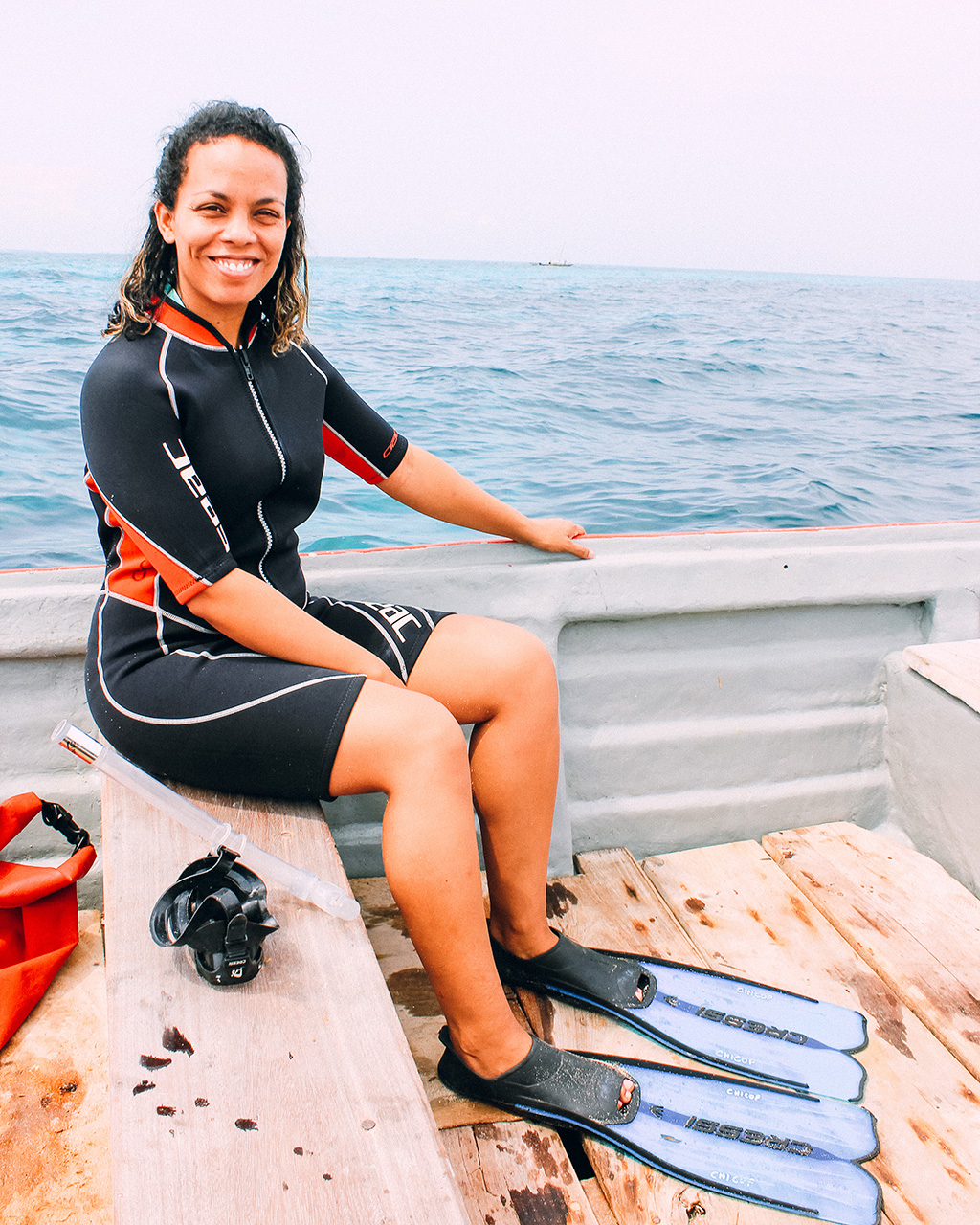
Only researchers may dive here – visitors snorkel with a guide. Image credit: Lauren McShane
Late morning in the turquoise ocean, I followed the floating ring trailing behind head guiding ranger, Omar Nyange Ame. Even with high visibility, I barely spotted the octopus concealing itself in perfect camouflage against the coral. We bobbed high above myriad healthy purple, brown, green and beige corals, which act as a nursery along Tanzania’s coastline and a safe haven where fish can grow to full size without being caught.
‘In the beginning, people didn’t understand what we were doing, and also that coral is alive. They would come to fish and they would want to fight,’ said Omar, who has been with Chumbe since the start. ‘But after teaching them, they understood and now they fish outside the boundaries.’ Like Omar, some of the marine park’s patrol rangers are ex-fishermen, who founder Sibylle Riedmiller recruited because they were better able to educate fellow fishers. They now understand sustainability and call themselves environmentalists.
Back on land, I put away my snorkel and goggles and, with salty skin and sandy toes, tucked into a lunch of seafood, salad, rice and potatoes in the former lighthouse-keeper’s house. It has been converted into a visitors’ centre with a restaurant and classroom for Chumbe’s environmental education programme. Since 1996, the programme (fully funded by Chumbe’s guests) has educated more than 10 000 students, teachers, fishermen, government officials and community members. Most students visiting the island don’t know how to swim, but here they get to snorkel and take a peek into Chumbe’s marine world while wearing buoyancy vests and holding onto floating tubes.
Heading into the forest that night, it took our guide next to no time to pinpoint a giant coconut crab with his torch. I sized up its pincers – the length of my hand – and proceeded in the dark very cautiously, illuminating tree roots, fallen branches and deep crevasses the crabs called home.
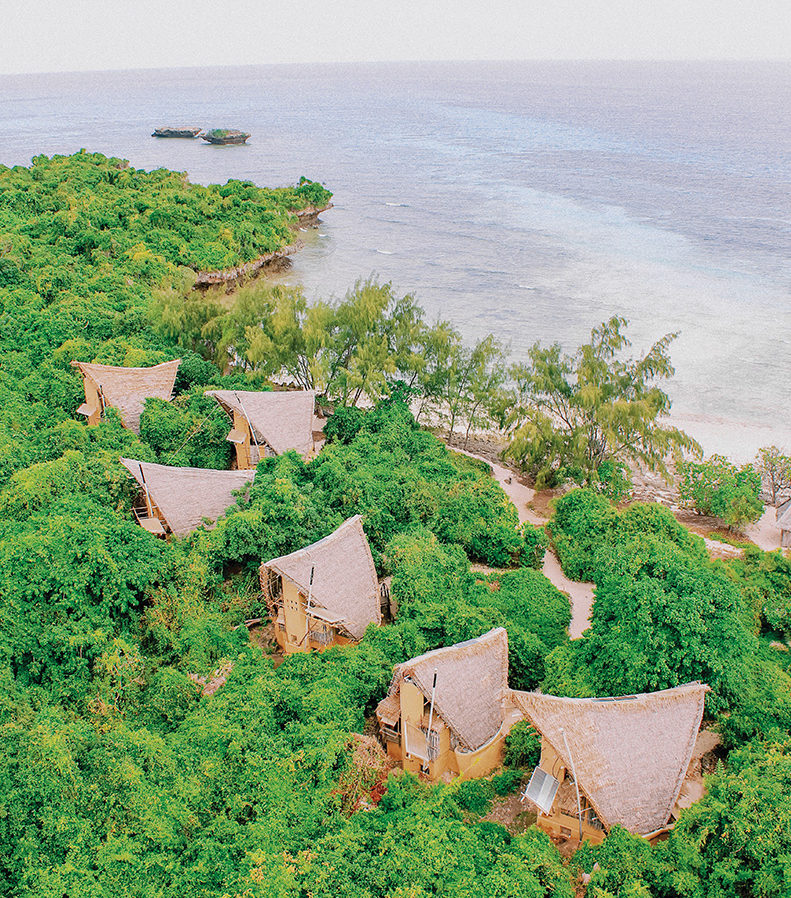
The eco-bungalows feature solar power, rainwater catchment, composting toilets and vegetative greywater filtration. Image credit: Lauren McShane
The next day I climbed the 132 steps of the lighthouse, built by the Sultan of Zanzibar and the British in 1904. A light breeze met me at the top and, looking down over the seven bungalows, dense forest and aquamarine ocean hemming in this little island, I knew the climb in the midday humidity had been worth it. Now solar-powered, this old lighthouse still functions as an essential warning of shallow waters to mariners, just as Chumbe continues to guide the way forward for greening the world, one little island at a time.
The Details
A day trip to Chumbe Island costs R1,320 per person, which includes boat transfers, lunch, forest walk, lighthouse visit and guided snorkelling. The boat departs daily from the Protea Hotel Mbweni Ruins, south of Stone Town, at 10am (check-in 9.30am).
Overnight stays are from R3,800 per person sharing, full board (alcohol charged extra), and include all of the above plus a mangrove walk, evening crab walk, intertidal walk and guided day and night snorkelling. Kids under 12 half price. chumbeisland.com
It took founder Sibylle Riedmiller four years of extensive government negotiations to set up Chumbe Island Coral Park, which is why, she believes, no one has followed her example in Tanzania. There’s also the financial responsibility of running a park and social programmes without tax exemption. However, over the last decade there have been a few other private marine-conservation initiatives developed around the world along similar lines, such as Misool in Indonesia and Nikoi Island in the Philippines – all members of a network of Privately Protected Areas called The Long Run (thelongrun.com). ‘It’s never too late.
Chumbe remains unique in the world, and we’d certainly welcome others to follow what we did,’ says Sibylle.
Text and photos: Lauren McShane
Also read: Greening the big blue: eco-friendly travel in Zanzibar









